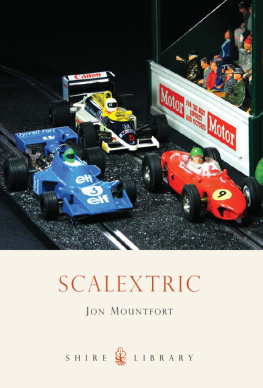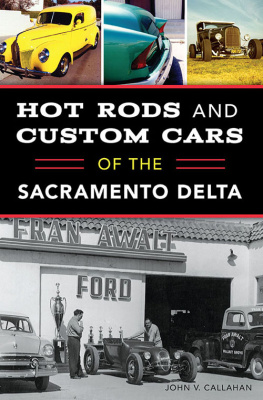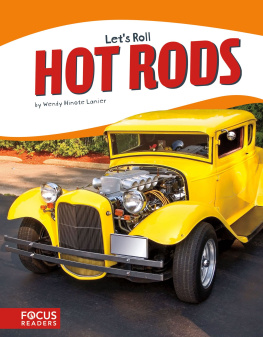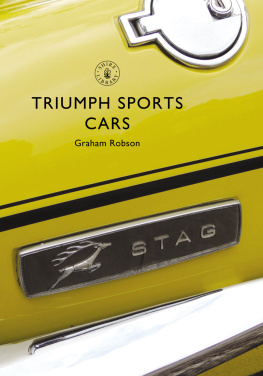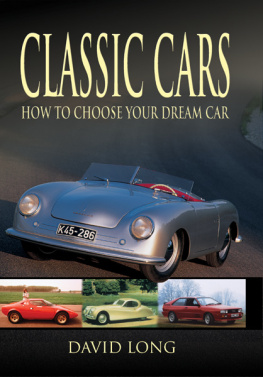Million Dollar Ferrari Sports Cars to Beat-Up Old Ford Trucks, Classic Mopar Hot Rods to Innovative Chevy Rat Rods, Vintage Trans Am Racing to Cars and Coffee Meetings
Whats the Deal With Vintage Racing?

You ever wonder what is the deal with those guys that run old slow cars around the track at "vintage races" when there's so many modern, quick options? I mean, a Miata smokes almost every one of those old sport cars, right? Why would you ever waste money running something old and slow? At the last Portland Historic Races it struck me how few people were in the stands, our culture has no understanding of how exciting these vintage sports cars are, as well as the times and history they represent.
I've thrown this together as a primer. If I can share with you some of the stories I (think I) know, you might gain a fresh appreciation for vintage sport car racing. And if you're one of my friends, maybe you won't think I'm so weird for spending time and money on my 1957 sports car when your Accord is faster!

For your sake I'm going to greatly abridge this and only hit you with some mountain-top highs of the sport. Due to the litigious nature of our society Im going to have to use photos Ive captured rather than more applicable period photos easily available on the internet because someone will threaten to sue me (its already happened on my free blog). So not every picture will match the topic exactly, but I did the best I can with my photo stock. Remember Peter Egans seminal work on car short stories, Side Glances , didnt have any photos!
I might get a few things wrong or slightly off because until someone pays me to do this I just don't have time to research and write a novel titled "The History of Racing". Someone else has anyways. And it's awesome. If you only have 20 minutes, read this. Or if you have 5 hours to invest, you should watch the Shell series The History of Racing available on YouTube ( https://www.youtube.com/watch?v=OROeC3_Zt78&list=PLEEC587278736BB88 ).
If you don't have time for Shell, well then read on.

What's considered the first car race occurred in 1894 in France. Many of the cars were steered by a rudder type setup. The 1st across the line was a gentleman named de Dion but he was disqualified because his car was more of a train, running on steam using a stoker system. Second across the line was a Peugeot. This might be the last race that a Peugeot won. Somewhat fitting for a car made in France, who have not won a war of their own accord since the 1800s.
I'm kidding, Peugeot made some great racing cars during these early years and even won the Indy 500 state side.
De Dion is a well known name in car circles because shortly thereafter he designed a rear axle that allowed each wheel to move up and down independently. It was largely ignored and cars typically had one piece rear axles. 60 Years later Jaguar adapted this De Dion rear end into their E Type sports car. Since then all sports cars have went that direction in some form, the last holdout being the Ford Mustang, who in 2015 finally adopted an independent rear end... 115 years after Mr. de Dion invented it. Way to adapt quickly Ford!
France continued to be the leader in car racing. England instituted some weird laws due to public concern about car/horse interactions. You could have a car, but you had to hire someone to walk in front of you with a flag. No wonder Mr. Toad craved speed, he was stifled by British law!

Scarcely 9 years later cars had come a long way. Instead of rudders, some cars had steering wheels, and the overall shape was beginning to resemble less a "horseless carriage" and more our traditional car.
Unfortunately safety had not progressed along with the car. Tires were still solid, suspension almost non-existent, brakes minimal, center-of-gravity high, etc. The Paris-Madrid race of 1903 was actually France's last open-road race. In the passenger/mechanic seat of the car leading the race was one of the Renault brothers. After the first day of racing French government stepped in and stopped the race after nine fatalities, including the brother of Mr. Renault who was following behind in another race car.
On the American side of the pond, oval racing became popular. This author's opinion is that this may have stemmed from the velodromes that were common to bicycle racing prior to the autos proliferation. As oval racing is a far cry from open-road, sport car racing, other than this mention this blog will stay away from the rich history of oval racing.

Eddie Rickenbacker was one of the famous pre-WW1 American racing heroes. His autobiography is a must have. His father died when he was 8. Eddie went to work at a local factory to help support his family (he was the oldest child). While working at the factory he took by-mail engineering courses. His engineering background gave him an opportunity to work at an auto-shop. The shop sponsored race cars and Eddie was given the opportunity to drive. He became an American racing hero due to his success, nicknamed "Fast Eddie".
At the outbreak of WW1, Eddie was technically too old to become a pilot. So he travelled to France and showed up at the base of the Hat-in-the-Ring flying squadron. In an odd coincident, he had previously helped the base commander fix his car back in the states. The base commander let Rickenbacker learn to fly.
By the end of the war Eddie was America's leading Ace and the leader of the Hat-in-the-Ring squadron.
Eddie went on to own the Indianapolis Speedway, and Eastern Air Lines. In addition, he was a WW2 spy to Russia because Russia wanted his advice on their planes. Rickenbacker crashed at sea in a B-17, surviving with his crew on a floating raft for close to a month. A Christian, he had a small bible in his suit and Eddie instituted daily bible studies on the raft. The experience brought several of his co-raftees to belief.
His autobiography includes some prototype testing he was involved with, including a photo of a rocket powered backpack the pilot would wear. Eddie's life reads like a science-fiction, adventure novel. Then you read who endorses the book. Jimmy Doolittle and a President. No fiction here. Fast Eddie was a model American, through and through. Anyways, Ive digressed a lot, but Rickenbackers autobiography was one of the best books Ive ever read and I take every opportunity to tell people about it.
Back to racing.
In 1907 England opened the 1st purpose built racetrack, Brooklands. Built with steep banking, the intent was that cars that drove near the top would need to turn little or at all on the banking. The track was fast but bumpy. The sectional concrete paving technique was the cause of the bumpy ride. Brooklands stayed a track until WW2, although as speed increased it wasn't uncommon for Brooklands to send cars airborne.
During WW2 Brooklands was used for an airstrip and parts of the track were destroyed during bombing raids, or taken out for facilities.


